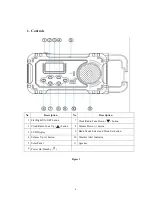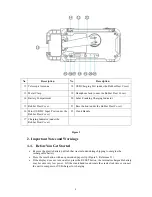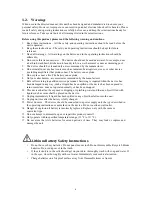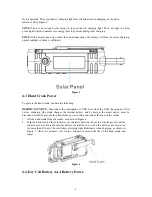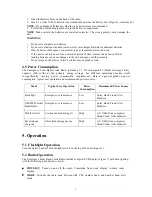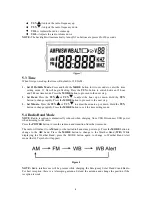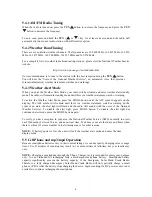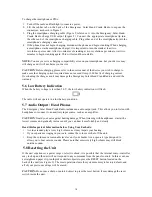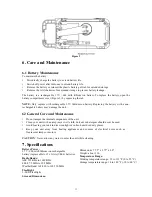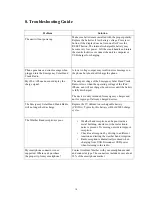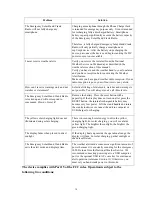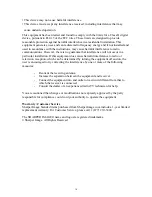
5.4.1
AM/FM
Radio
Tuning
When the radio is turned on, press the
TUN
button to increase the frequency and press the
TUN
button to decrease the frequency.
To auto scan, press and hold the
TUN
(
or
) key for at least one second and the radio will
automatically tune to next radio station with sufficient reception.
5.4.2
Weather
Band
Tuning
There are seven distinct weather channels. The frequencies are 162.400 MHz, 162.425 MHz, 162.450
MHz, 162.475 MHz, 162.500 MHz, 162.525 MHz and 162.550 MHz.
For a complete list of weather radio broadcasting stations, please visit the National Weather Service
website:
http://www.nws.noaa.gov/nwr/indexnw.htm
Our recommendation is to tune to the station with the best reception using the
TUN
but
but
ton.
You will hear the “Voice of the National Weather Service”, an automated voice that provides
forecast information, weather statements, watches and warnings.
5.4.3
Weather
Alert
Mode
When you enter the Weather Alert Mode, your radio will be silenced and enter weather alert standby
mode. The radio will remain in standby mode until there is a weather statement, watch or warning.
To active the Weather Alert Mode, press the MODE button until the ALT symbol appears on the
display. The ALT symbol will remain until there is a weather statement, watch or warning.
In the
event of an alert, the alert light will flash and the radio will sound (with the voice of the National
Weather Service).
To disable the alert light, press MODE button. To disable the alert light but
continue in alert mode, press the MODE button again.
To verify you have reception in your area, the National Weather Service (NWS) normally run tests
each Wednesday between 10 a.m. and noon local time. Tests may occur at other days and times when
there is a threat of severe weather in the listening area or for other reasons.
NOTE:
If battery power is low, the unit will exit the weather alert mode and enter the time
display mode.
5.5
Cell
Phone
and
mp3/mp4
Operation
Because smartphone batteries vary in their current ratings, we cannot specify charging rates or usage
time. 10 to 15 minutes of cranking may result in 1 or more minute of talk-time, but your results may
vary.
NOTE:
Charging a smartphone through the Phone Charger Jack is intended for emergency purpose
only. It is not intended for recharging fully a discharged smartphone battery. Smartphone battery
capacity significantly exceeds the battery capacity of the Emergency Solar Hand Crank Radio.
Therefore, a fully charged Emergency Solar Hand Crank Radio will only partially charge a smart
phone or PDA. After the battery stops charging the device, begin cranking if a DC power source is not
available to continue recharging the smartphone.
9


